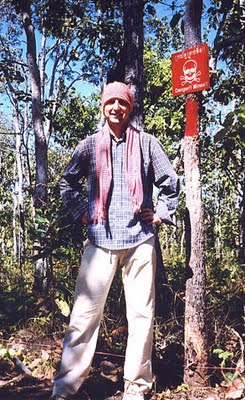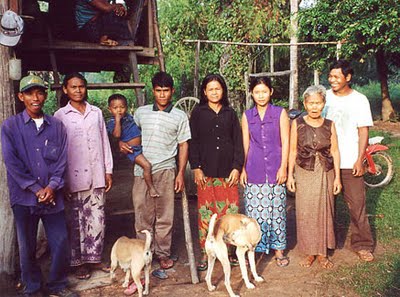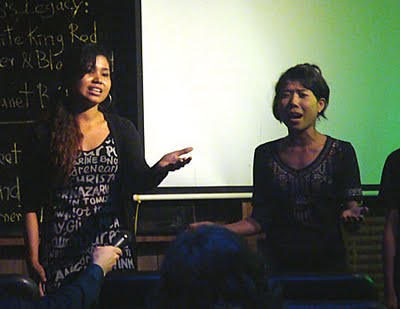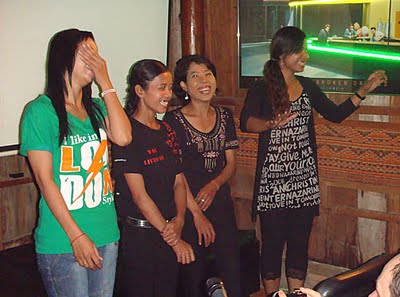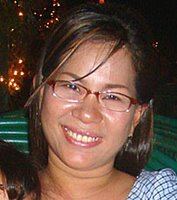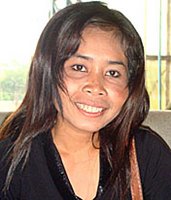Remembering Koh Ker
The journey by moto along Route 12 from Kompong Thom to Tbeng Meanchey was gruelling and uncomfortable enough but paled by comparison to the 70 kms of road to Koh Ker. However, more of that soon enough. The tenth century royal capital of Koh Ker had been a magnet for me for a long while after Sok Thea, a Khmer friend of mine blazed the trail there just under two years earlier. In a remote and inhospitable corner of Preah Vihear province, for so long under the control of the feared Khmer Rouge and in an area awash with landmines, Sok Thea's stories had whetted my appetite for a similiar adventure and with Sokhom's help, it became a reality. Koh Ker became the centrepiece of the Khmer kingdom in 928 when Jayavarman IV built a series of colossal monuments in a twenty year period of frenzied temple construction. When the capital returned to Angkor, Koh Ker fell into disrepair and has remained isolated and inaccessible ever since. The Koh Ker period of Khmer history is renowned for its architecture and sculpture on a monumental scale and the museum in Phnom Penh has many key pieces on display that prove the point. Recently, the Cambodian government has earmarked the site as a key historical attraction which they plan to develop in a bid to attract foreign tourists, so I was desperately keen to visit the complex before that happens.
After our first night in Tbeng Meanchey at the 27 May guesthouse, Sokhom and I rose early and took the road heading west, after breakfast at a nearby cafe. It was just before 7am and little did I know our eventual destination was nearly eight hours away, although Sokhom had an idea as he'd made the trip once before. We immediately got a foretaste of what was to come as the road surface alternated between heavily rutted and sandy and quickly turned into little more than an ox-cart trail rather than a navigable road, once we'd taken a left turn at the village of Thbal Bek. Parts of the track were underwater and we had to detour into rice fields to avoid some of the flooded stretches. Apart from a couple of ox-carts, we saw very few people until we stopped a motorbike rider for directions. Remarkably, Sokhom knew him as an aid worker with Health Unlimited in Kompong Thom and he told us of the poor state of the road ahead. Three hours into our trek, we arrived at the village of Koulen, at the half-way point, and time for a well-earned rest, while Sokhom brought out his repair kit and tinkered with the engine and suspension. We ate some noodles and quizzed the local policemen about road conditions, safety and other ancient sites in the area. Suitably rested, the track continued in the same vein as before, with the sandy surface making it impossible to drive at anything more than a crawl. The route remained flooded in places and whilst crossing one stream, we lost control of the moto and had to pick it, and ourselves, out of the water. We stopped one of the few ox-carts we encountered, to buy a couple of bunches of bananas, whilst a noticeable feature of the flooded areas was the abundance of brightly-coloured butterflies.
As the trail wound its way through a heavily wooded area, I was relieved that Sokhom had made the trip before as I'm sure we would've got lost. At times, the route ahead was blocked but he somehow found a way forward and kept us on track. The sound of a helicopter overhead suggested some visitors to Koh Ker had decided on the more comfortable travelling option, and who could blame them. My back and bottom were aching and sore, my face was red from the sun and the rest of me covered in dust and dirt. Then, as if sensing my desire to curl up and go to sleep, Sokhom announced we had arrived. Imagine my surprise when he stopped the moto and pointed off to the right, where through the trees I spied a large laterite tower and wall. My tiredness evaporated and my sense of excitement took over as we walked through the light brush towards a hole in the laterite wall surrounding the tower. It was just under eight hours since we'd left Tbeng Meanchey and our arrival at Prasat Neang Khmau, the southernmost temple of the Koh Ker group, was a great relief. The temple itself faces west and is a tall, dark laterite tower inside a walled compound. Through the sandstone doorway with carved colonettes and below a cracked and defaced floral lintel propped up by a large wooden pole, a large pedestal and broken linga litter the inside of the sanctuary. Back on the moto, we covered a kilometre or so to the state temple of the whole Koh Ker complex, Prasat Thom. The eastern gopura entrance was blocked by fallen sandstone columns and vegetation had taken a firm hold around the other sanctuaries and galleries as I quickly made my way through the ruins to catch my first glimpse of the giant sandstone pyramid - the complex's crowning glory.
Keen to organise our overnight accommodation before the sun went down, Sokhom and I made the short hop to the nearby village of Koh Ker and quickly located the village chief, Yuon. He was only too happy to let us stay at his home for the night, so we dropped off our hammocks and water bottles, booked our chicken supper and returned to Prasat Thom to watch the sunset. While Sokhom took the opportunity to wash off the dust and dirt of our trip in one of the royal ponds, I carefully negotiated the rickety wooden ladders that straddled each of the terraced pyramid's seven tiers. The square pyramid is 36 metres high with the steep stairways on the east side ravaged by time and replaced by the wooden ladders to make access to the summit a little easier. From the top, the view over the surrounding forest canopy with the Kulen mountains in the far distance was simply breathtaking, enhanced by the glow of the setting sun in the west. There wasn't a great deal of room at the top, as I sat down next to some broken carvings of lions and elephants and enjoyed the peace and quiet, noticing a column of smoke rising from the village nearby. At the foot of the pyramid, I could just make out Sokhom in the deepening gloom as I cautiously made my way down the ladders to join him and we returned to the village.
At the top of a much smaller ladder, Yuon welcomed us into his two-roomed bamboo home on stilts and introduced us to his wife, five children and brother. As headman of the village, his home is one of the largest in the hamlet and under the slatted verandah, where we hung our hammocks and mozzie nets and an hour later ate supper, was his collection of family animals including two dogs, chickens, pigs and piglets and tied up closeby, two oxen. Yuon's wife served up our supper of chicken, rice and vegetables as we all sat cross-legged in a circle under the naked flame of a lighted torch, with Sokhom translating the conversation. It was just before 8pm when we thanked the family, the flame was extinquished and we climbed into our hammocks. Any thoughts I had of falling asleep were forgotten as the family continued with their chores in complete darkness, a Khmer language radio was switched on and under the house a fire was lit and neighbours stopped to chat. It was another two hours before everyone settled down for the night, leaving the occasional animal sound and the creaking of the bamboo structure as the final sounds I heard before I fell asleep.
Awakened first from my slumber by a crowing cockerel at 3am, two hours later the whole village erupted into a similar morning chorus that signalled the start of the day. Sokhom and I arose and in the glow of a lighted torch - the village had no electricity, or water-pump for that matter - we ate the remainder of the previous night's chicken with the family, thanked them for their hospitality with handshakes and a small payment in riel and paused for photographs. Sokhom's moto had aroused considerable interest as no-one in the village owned one and a farewell party had gathered to wave us off at 7.30am, as we returned to a deserted Prasat Thom for one final look. The early morning dew and fine mist gave the temple an eerie feel as we clambered across the broken entrance gopura and reached the large tower known as Prasat Kraham ('red temple'). Broken statues and pedestals littered the floor of this massive structure and the mist lifted as the rays of the sun pierced the tree cover and highlighted a headless apsara on a doorframe. Dense green vegetation throughout the complex restricted exploration to the main pathways as we ambled past a series of nine small identical brick towers with weather-worn lintels and colonettes in situ, and made our way to the giant terraced pyramid at the rear. The unsteady wooden ladders didn't fill me with sufficient confidence to attempt another ascent of the tower, so we retraced our steps, investigating a few broken lion statues, more lintels and carvings amongst the ruined structures.
Our final visit to Prasat Thom lasted an hour before we headed back out of the complex, past faded 'Danger Mines' signs on our left and the remains of a laterite wall in the wooded undergrowth on our right. I signalled to Sokhom that a wall usually meant a temple, so we parked the moto and went to investigate. The brush was waist-high but not too thick as we traversed the wall and headed for a clump of large trees. A ruined brick gopura with broken carved colonettes signalled the entrance to another temple but the vegetation was simply too dense for us to inspect the large laterite temple any closer without a machete or scythe. Frustrated, we returned to the moto as I checked my map and decided that this must be either Prasat Bak or Prasat Chen, most likely the latter. There are believed to be up to 35 major monuments in the Koh Ker group and we'd only just scratched the surface. Our village friends were unaware of the location of the other structures as much of the land surrounding their village was potentially mined and unsafe even to collect firewood. I'm sure the Koh Ker group has many more delights to offer the adventurous traveller once the mines have been cleared and the land has been made safe and with the government earmarking the site for development, that might be sooner than later. Koh Ker is already attracting a small trickle of visitors, as we were told a group of five motorcyclists had spent a night camping at the main temple the night before we arrived.
The route back to Srayang, where we stopped for running repairs, was as bad as I remembered it. The sandy track, tree roots and stumps posed as many problems as the waterlogged sections but it was a slippery slope that undid Sokhom as he ended up knee-deep in mud and his moto submerged underwater. Fortunately, I managed to jump off the back of the bike at the last moment. We eventually completed the first half of the trip back to Tbeng Meanchey in four hours, with a noodle and petrol stop at Koulen, accompanied by loud music bellowing out from loudspeakers, celebrating a wedding party next door. Three hours later and with my bottom and back in agony, we arrived back in town. Covered in dust, I was grateful for the cold shower I had after booking into the Mlop Trosek guesthouse and the beef and chicken meal at the Mlop Dong restaurant as I reflected with Sokhom, what a wonderful adventure the trip to Koh Ker had been. It was a tough test for the two of us on his moto, my aching bones were testimony to that, but Sokhom had once again come up with the goods when it mattered. I can't speak highly enough of my resourceful friend.
